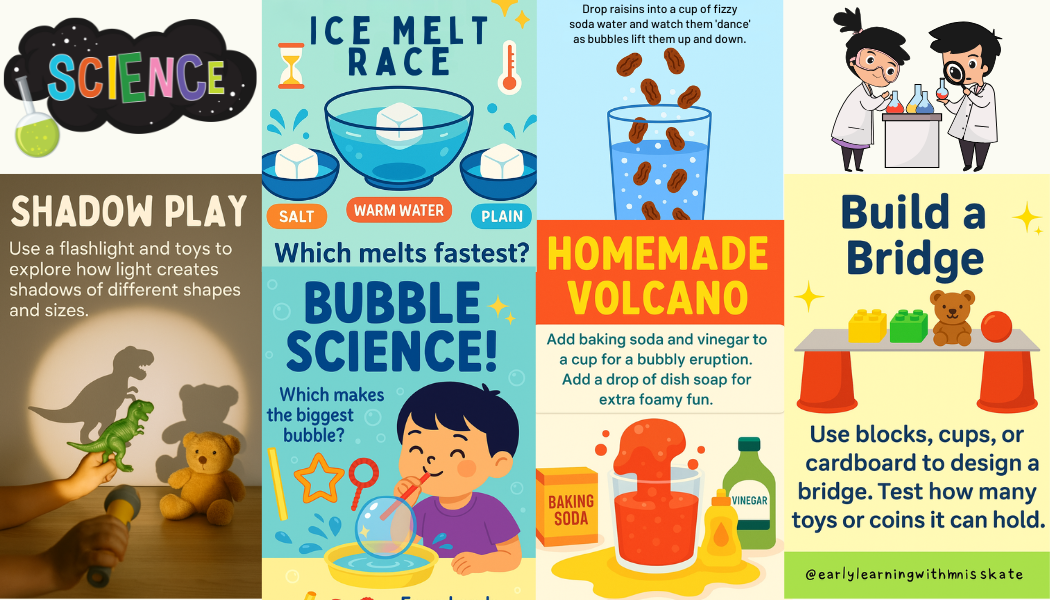10 Free Science Experiments: Easy At-Home Activities for Curious Kids
Science is all around us, and children are natural scientists! They love to ask questions, explore with their senses, and test out ideas in hands-on ways. When young children dive into science, they’re not just learning about the world—they’re also building early problem-solving skills, confidence, and creativity. Bring some science fun into your home with simple, safe, and free activities.
10 Simple, Safe Science Experiments to Try at Home
These quick, no-fuss experiments use materials you likely already have around the house:
Sink or Float Test – Gather a bowl of water and everyday items (spoon, toy, apple, block). Ask your child to predict: will it sink or float?
Color Mixing Magic – Use food coloring, clear cups, and water to mix red, blue, and yellow into new colors.
Nature Walk Scientist – Head outside with a bag and collect leaves, rocks, or flowers. Sort them by size, color, or texture.
Dancing Raisins – Drop raisins into a cup of fizzy soda water and watch them “dance” as bubbles lift them up and down.
Homemade Volcano – Add baking soda and vinegar to a cup for a bubbly eruption. Add a drop of dish soap for extra foamy fun.
Shadow Play – Use a flashlight and toys to explore how light creates shadows of different shapes and sizes.
Ice Melt Race – Place ice cubes in different bowls (one with salt, one with warm water, one plain). Which melts fastest?
Magnet Hunt – Explore the house with a magnet. Which objects are magnetic, and which are not?
Bubble Science – Try blowing bubbles with different tools (straws, cookie cutters, pipe cleaners). Which makes the biggest bubble?
Build a Bridge – Use blocks, cups, or cardboard to design a bridge. Test how many toys or coins it can hold.
These activities are short, engaging, and spark endless curiosity!
Adapting for Different Ages and Abilities
Every child explores science differently, and that’s a good thing. Here are a few ways to adapt:
For younger preschoolers: Focus on sensory experiences—touching, smelling, and seeing changes.
For children with autism or ADHD: Use clear visual instructions, break steps into smaller parts, and keep experiments short with built-in breaks. Provide gloves or other tools to help with sensory needs.
For children with developmental delays: Provide extra time, model each step, and celebrate small successes to build confidence.
The goal is exploration—not perfection!
When children experiment, they’re learning to ask questions, try new things, and see mistakes as opportunities to learn. Science helps kids build resilience and confidence. These are two skills they’ll carry into every subject and every part of their life.
👉 Which one will you try first? I’d love to hear from you! Leave a comment below and let me know how it goes!


